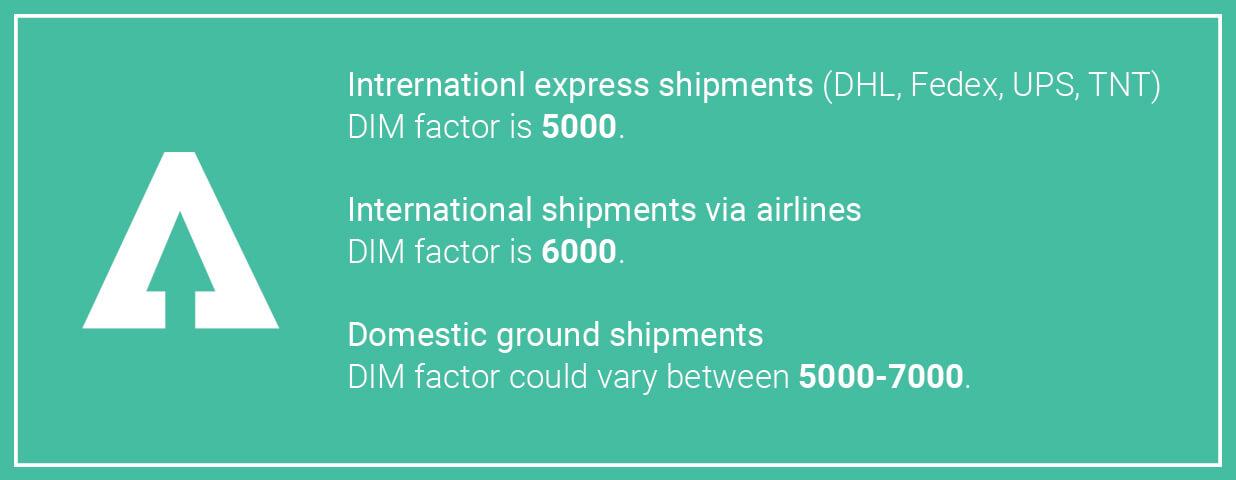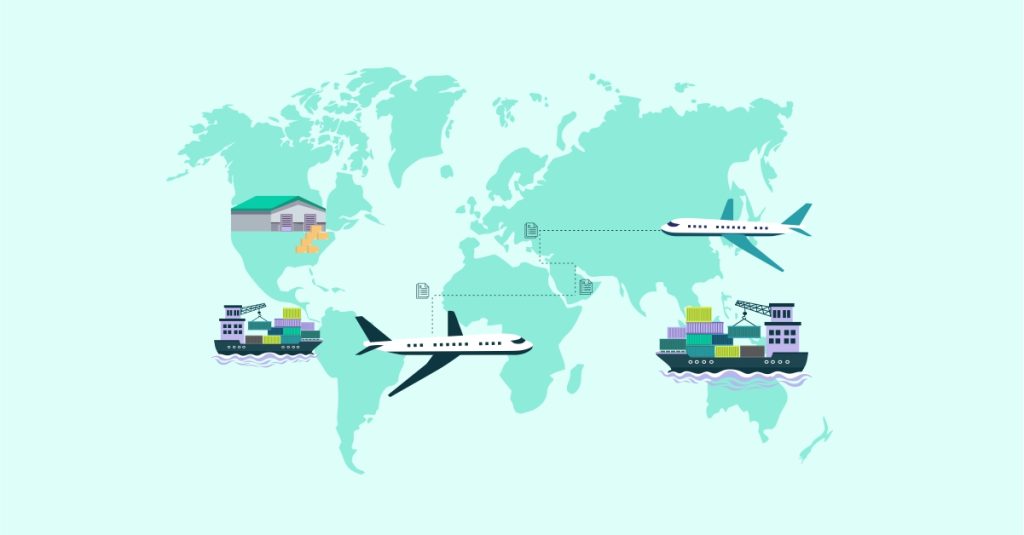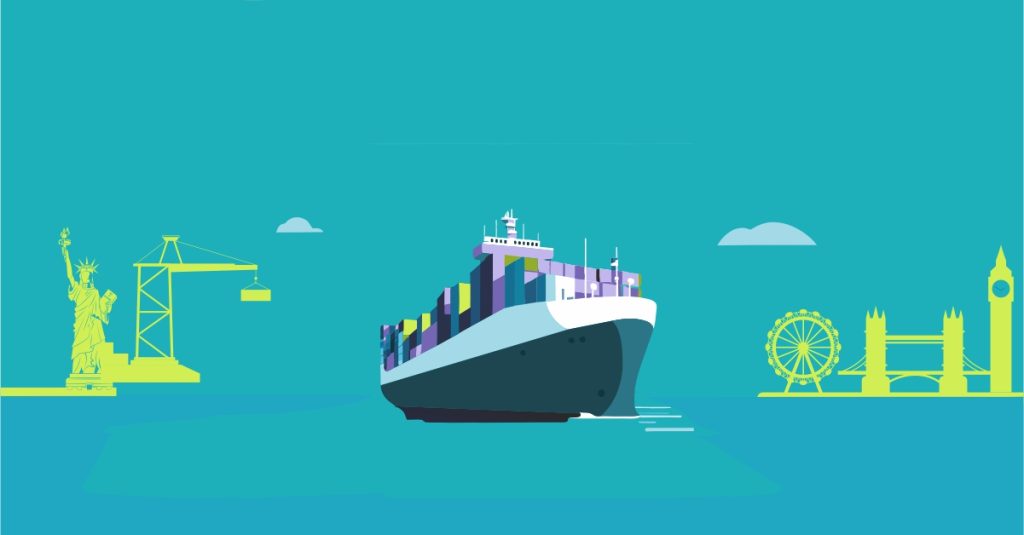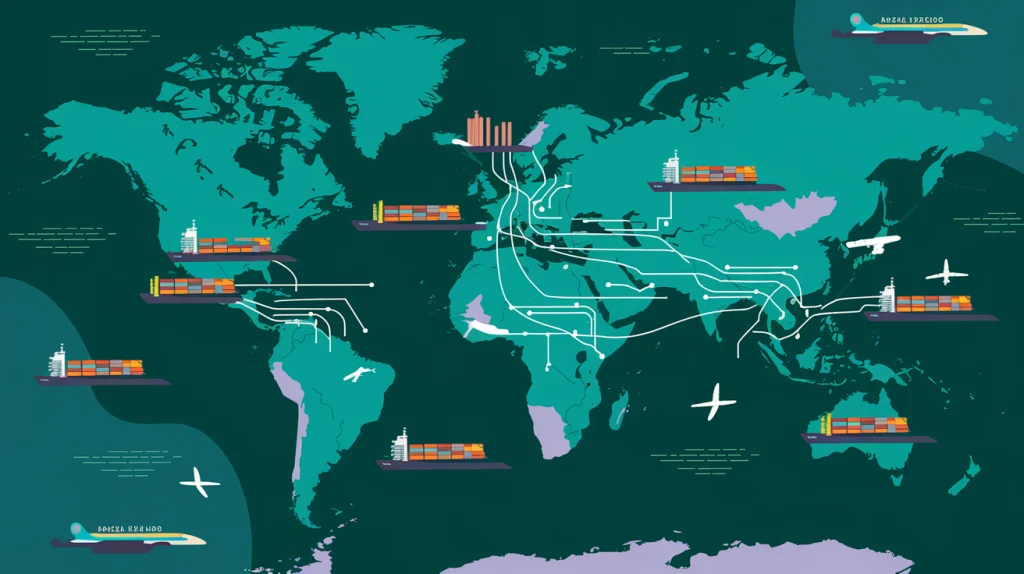What’s volumetric weight? How do you calculate volume weight? And how can knowing the ins and outs of modern shipping practices save your business a little – or a ton – of money?
Let’s explore.
When shipping by overland or by air, both volume and weight must be carefully calculated to forecast shipping costs reliably. Since package density can vary widely – a pallet of books versus a pallet of feather pillows, for example – it’s important for couriers / airlines to maintain a standard system to determine how much can actually be shipped (profitably) in a given airplane / truck.
The concept is simple: multiply a package’s length, height, and width measurements, then divide by a number known in the industry as the “DIM factor.” The actual DIM factor used varies by company.
The result? Your package’s “volumetric weight”, or “dimensional weight”.

Every package has a “chargeable” weight and it takes many people by surprise when it’s not even close to actual weight, especially with less-dense packages.
“Billable or “chargeable” weight is the larger of gross weight (actual) or volumetric weight. This weight will always be used to determine shipping fees.”
Here’s a simple example to illustrate how the formula affects shipping costs:Using the common DIM factor 5,000, let’s say you’re shipping a 10Kg package measuring 50Cm on all sides – the formula 50 x 50 x 50 / 5000 gets used to determine its volumetric weight:
50 x 50 x 50 =125,000 / 5,000 = 25Kg
In this case it’s 25Kg – which could be an expensive surprise: suddenly your estimated shipping costs have more than doubled; you’re paying for 25Kg instead of the 10Kg you expected. Is that okay for your business? Probably not – best to be aware.
Here’s a slightly more complex example, again using the DIM factor 5,000.
Now you’re shipping three boxes of books, weighing 15Kg each and measuring 40Cm on all sides- here is how your calculation should look like:
Actual Weight
3 (boxes) x 15Kg = 45Kg
Volumetric Weight
40 x 40 x 40 = 64,000 / 5,000 = 12.8 Kg x 3 (boxes) = 38.4Kg
Using the above formula, the total volumetric weight comes out 38.4Kg, but since the total actual weight, 45Kg, is higher – it will be used to calculate the chargeable shipping weight of 45Kg total.
Why do couriers and airlines do this?
On one hand, this helps them maintain profitability: if their plane is packed with pillows billed purely by actual weight, the cost of shipping them may exceed the revenue generated.
On the other hand, 1,000Kg of pillows takes up 10 pallets’ worth of space while 1,000Kg of books only takes 1-2 pallets. Knowing what to expect in advance helps them keep shipping efficient and profitably.
Why do I need to know all this?
As an entrepreneur, it’s wise to understand how shipping fees are calculated and keep track of any changes that occur – often, making a simple shift can cut shipping expenses considerably.
Consumers, of course, don’t need to worry about keeping track of various DIM weight calculations, but for you it could be business-critical: if volumetric weight’s too high to make air shipping reasonable you’ll need to consider other, more cost-effective methods to ship your inventory (ocean freight). This can take weeks, and you’ll need to plan accordingly to avoid running out of stock or disappointing your customers with unplanned wait-times.
Volumetric weight is also important to consider when designing your packaging, especially if it’s irregularly-shaped.
So… how does this help save me money on shipping?
At first glance, volumetric weight calculations can feel like you’re overpaying for shipping. Unfortunately, that’s quite possible. But there are ways to tip the scales in your favour.
In our example above, a single 0.5m³ package “weighs” 25Kg. You probably regularly import multiple packages and many of them are unlikely to be that dense – but our second example shows how consolidation and repacking can dramatically reduce shipping costs by treating multiple packages as a single shipment, with a single waybill and tracking number.
To avoid overpaying and keep chargeable weight to the minimum possible, let your freight forwarder know in advance when you’re expecting multiple or regular deliveries. They may be able to creatively combine your packages to simplify logistics and cut your shipping costs. This is especially effective with smaller-sized packages, which are often subject to minimum shipment fees regardless of their gross or volumetric weight.
That might mean shipping large-volume packages by sea – it’s much more economical and, if you plan in advance for the wait, maybe even splitting shipments (so you get “just enough” by air; right away, and the rest later on) you’ll be able to keep your inventory stocked and your customers happy.
Look at it this way: if you added another equally-sized but lighter box to our second example above – say, a 3kg box of clothing, you’d essentially get that part of your shipping for free because the gross weight provided by the books is still higher than the volumetric weight. But! Shipping the clothing separately, you’d be charged the volumetric weight, as it’s higher than gross (40 x 40 x 40 / 5,000). That’s how package consolidation saves you money.
Your goal should be to keep volumetric weight as close to gross weight as possible by mixing high and low-density packages.
Our example was small for simplicity’s sake, but you can cut your shipping expenses dramatically if you’re careful – half, three-quarters, and even more.
And don’t worry if this all seems confusing. You’ll get the hang of it quickly (use our volumetric weight calculator to get a head start, and play around with different package sizes and weights to see what works best for what you’ll be shipping).
And if you’d like to discuss creative shipping solutions or if you have any questions about volumetric weight, please don’t hesitate to contact a Unicargo freight specialist. We’re always happy to help.


